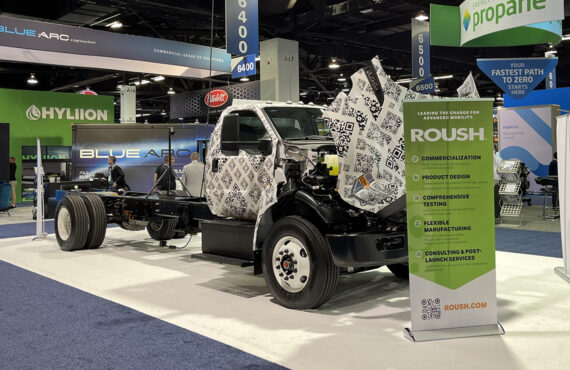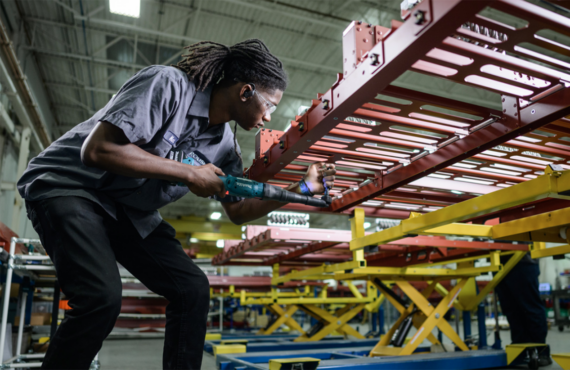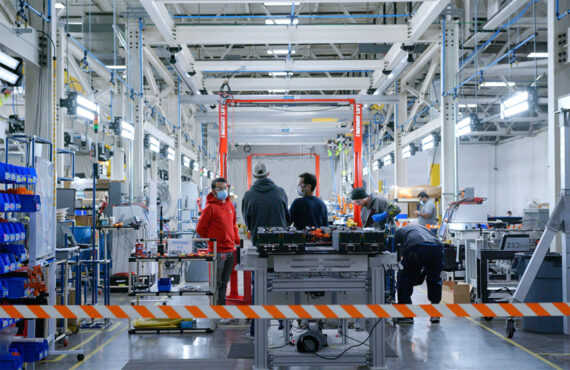Fueling Sustainable Water Adventures

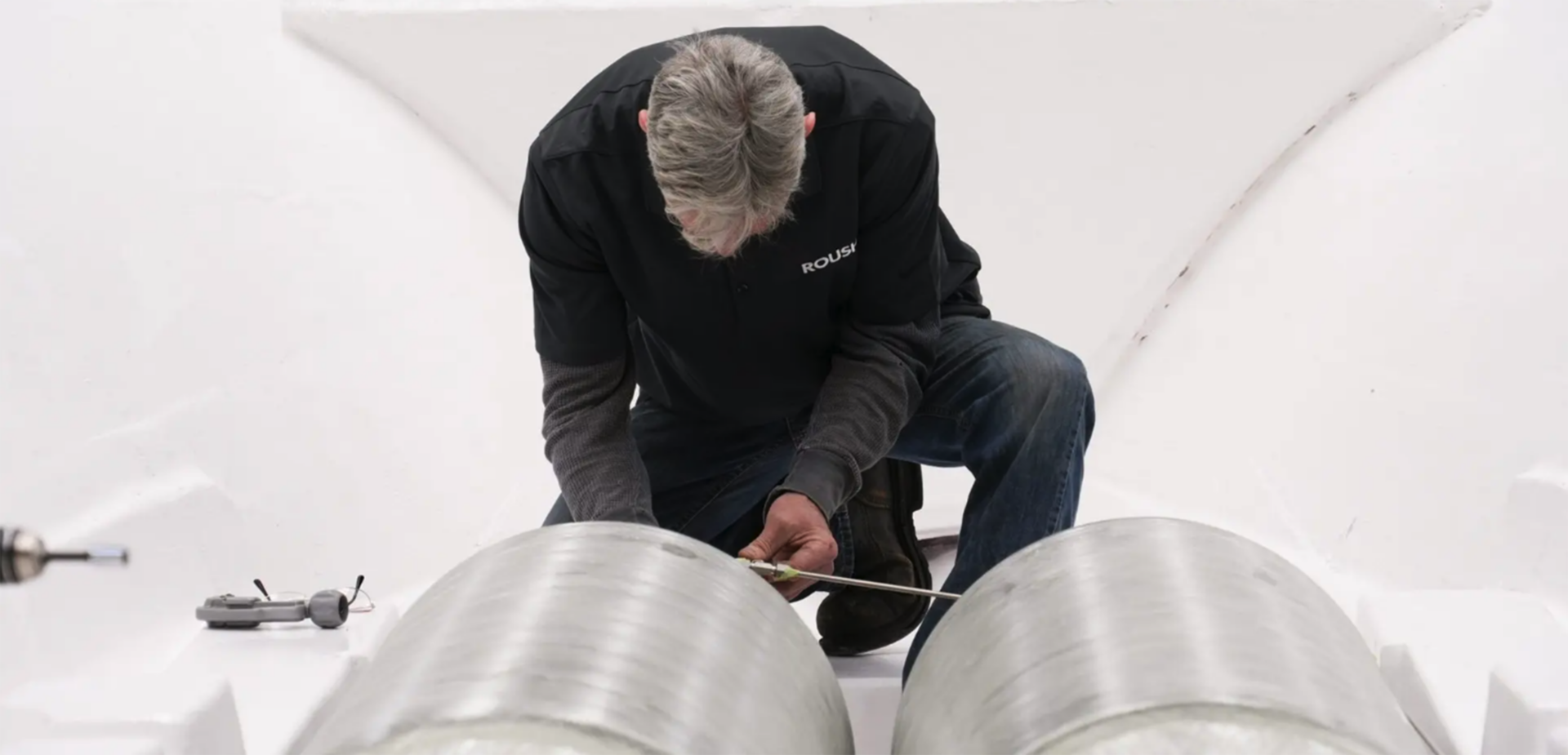
What was the challenge?
Achieving carbon neutrality is a significant undertaking. But achieving carbon neutrality by developing novel product solutions is an entirely unique challenge. Before Yamaha approached Roush for guidance and expertise, no other company had developed a working prototype for a hydrogen-fueled boat.
While electric vehicles and powertrains are growing in popularity, it should be noted that battery-powered boats do not align with consumer expectations for many marine applications. Current batteries simply do not have the energy required to move most recreational boats for long periods of time or with the performance characteristics consumers have come to expect. A hydrogen-powered boat closes the gap and offers a sustainable technology that can accelerate the future of marine travel.
The hydrogen-capable engine was only part of the development challenge. Due to the sheer size of hydrogen fuel storage tanks, challenges arose when trying to package the tanks within the boat’s hull. Significant modifications to the hull were required to accommodate the fuel storage tanks, and multiple teams at Roush were enlisted to develop a functional solution.
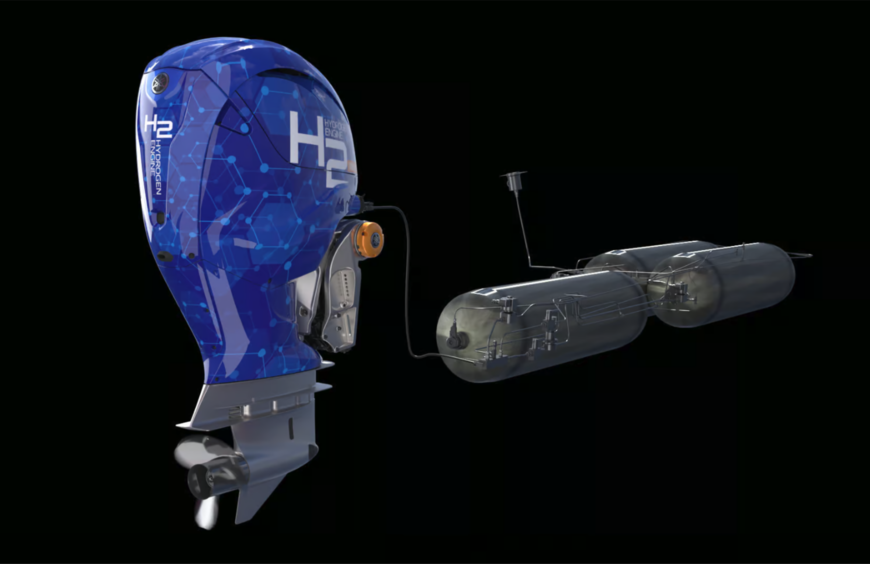
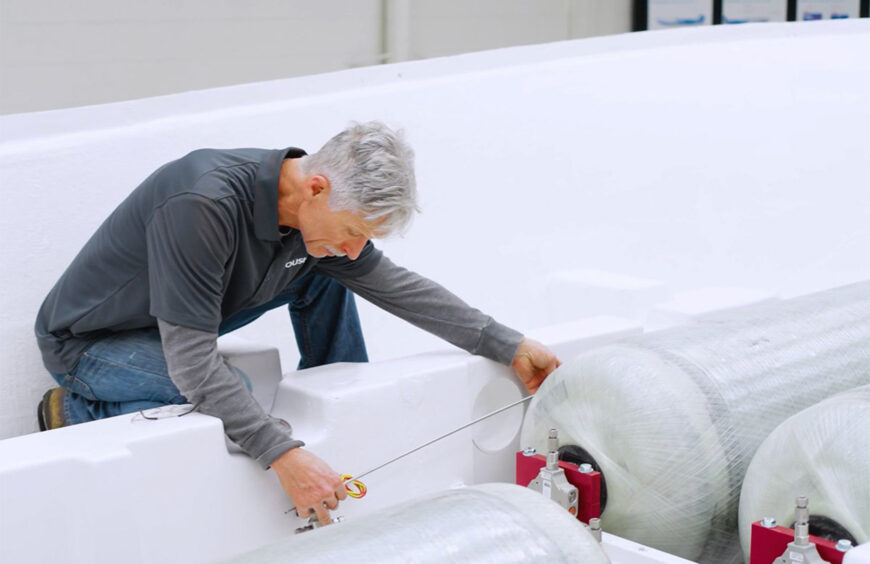
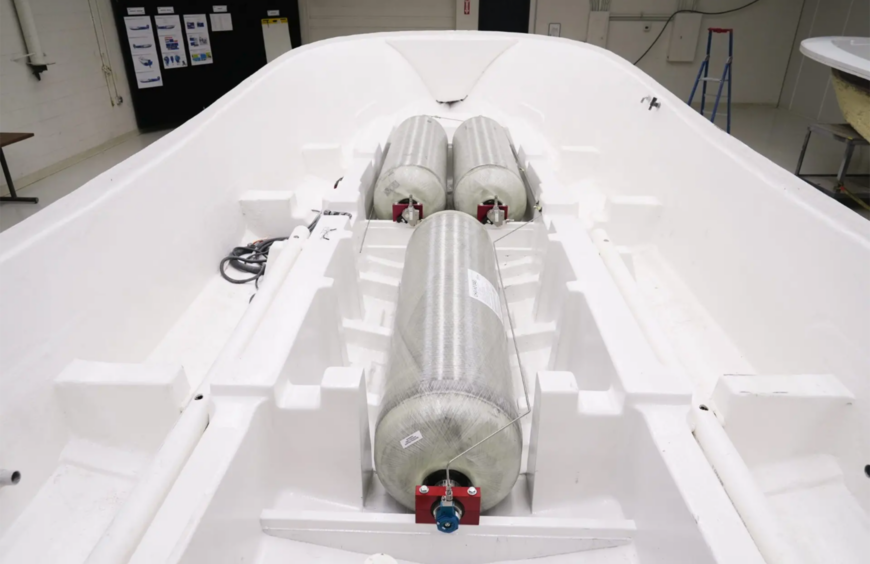
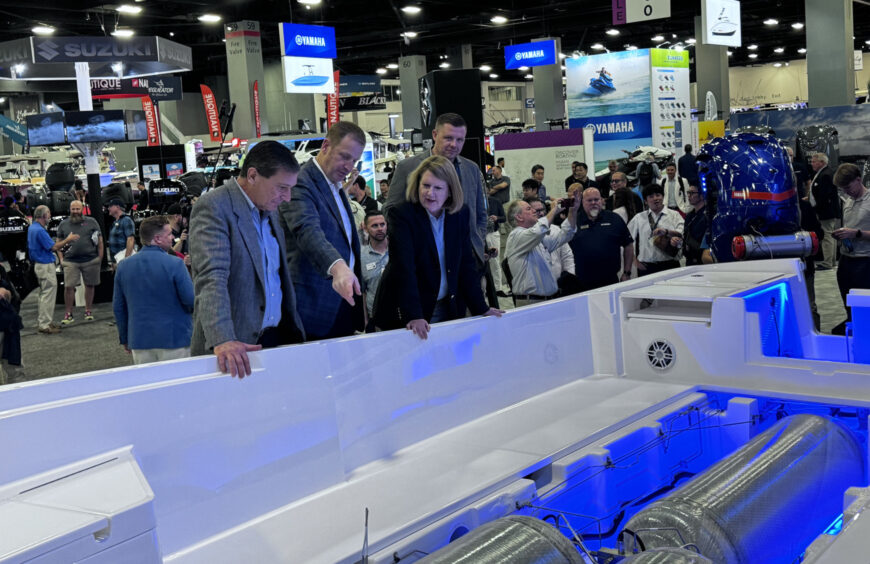
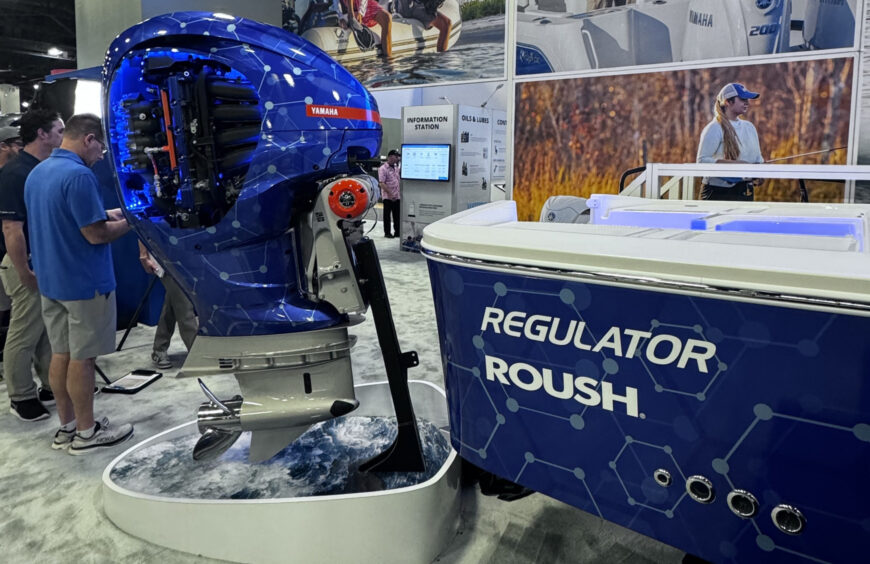
What did we accomplish?
2024 Miami Boat Show attendees experienced the combined accomplishments of Yamaha and Roush. The display boat that was created includes the full hydrogen fuel system, associated plumbing and valving, safety systems, and the hydrogen engine. The final product is a never-before-seen recreational boat that is transforming sustainable marine travel.
Roush also helped Yamaha get closer to their 2050 sustainability goals by understanding their long-term opportunities for sustainable recreational boating. The primary objective of this project was to design and integrate a prototype hydrogen fuel system into an existing marine product. But what’s next? A consumer-ready boat that will build upon the success of the current prototype. Testing for the next phase is scheduled for August 2024 and this refined boat will ultimately be used for functional demonstrations.
What services were provided?
To make this hydrogen-fueled boat a reality, multiple teams at Roush came together to develop the design solution presented in Miami. The Advanced Engineering team led overall program management, systems architecture definition and modeling, specifications development, engineering, design, analysis, safety system, and testing. The team made the boat control system a priority, ensuring that it was engineered and integrated for functionality.
The Prototype Development team facilitated cosmetic design elements while maintaining the integrity of the existing boat structure. This team also managed a model shop for property builds and worked alongside Roush’s Graphics team for help with colors, painting, and printing the product wrap.
Finally, purchasing support for component procurement was highly important for project success. Roush relied on a large network of connections across multiple industries to access and secure the critical parts and components required to bring the project to life on a strict timeline.
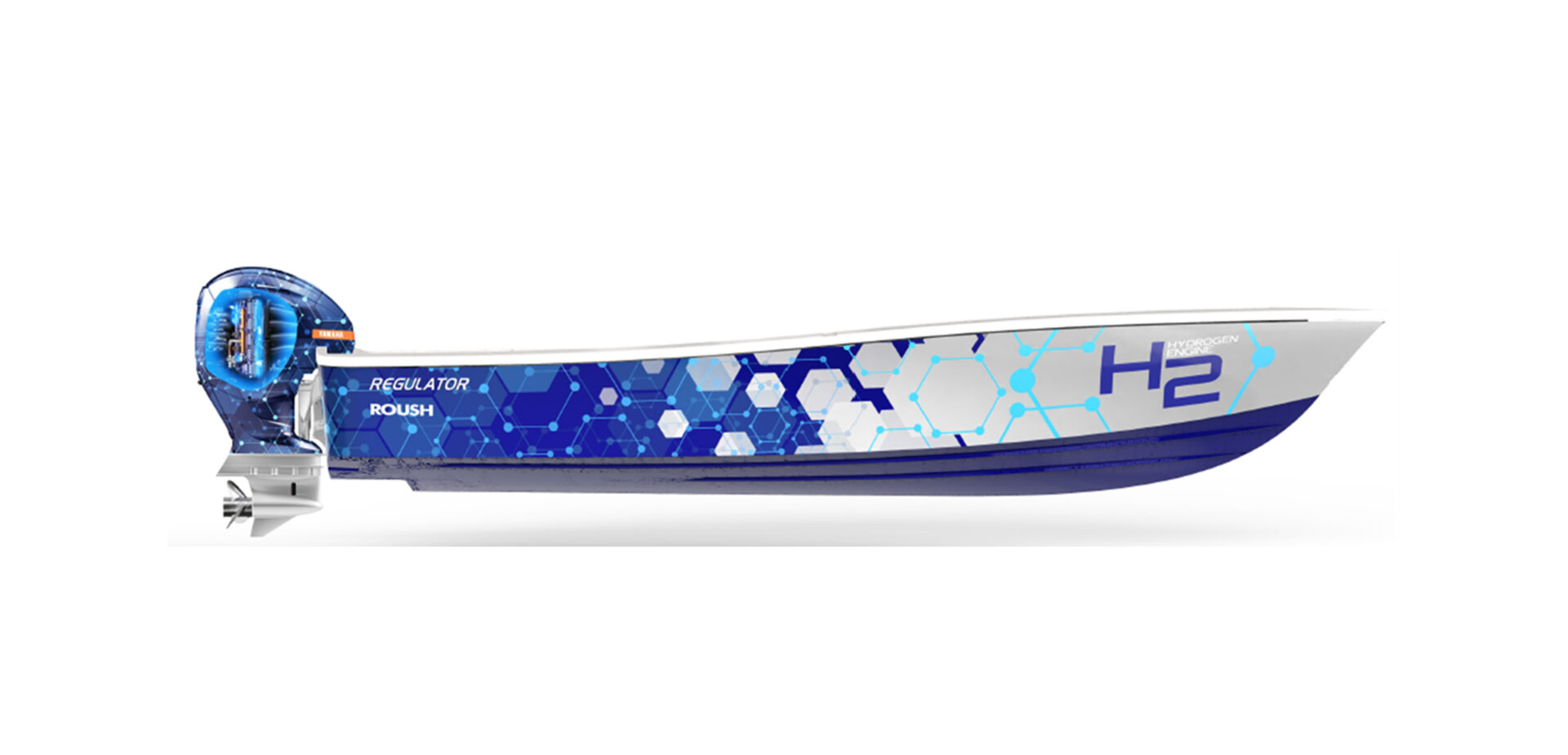
What is the impact?
This project holds significant implications for a new era of sustainable boating and carbon emissions reductions. Yamaha and Roush have shown that carbon-neutral fuels can be functional and accessible for marine vehicles.
But the potential benefits don’t end there. On a larger scale, this project also represents a blueprint for next-gen internal combustion engine efficiency across multiple transportation sectors. The search for impactful technologies to reduce carbon emissions is propelling forward, and it’s clear that customers are on board with sustainable powertrain systems.
Photos courtesy of Yamaha.
More Stories
Let’s work together.
Reach Out